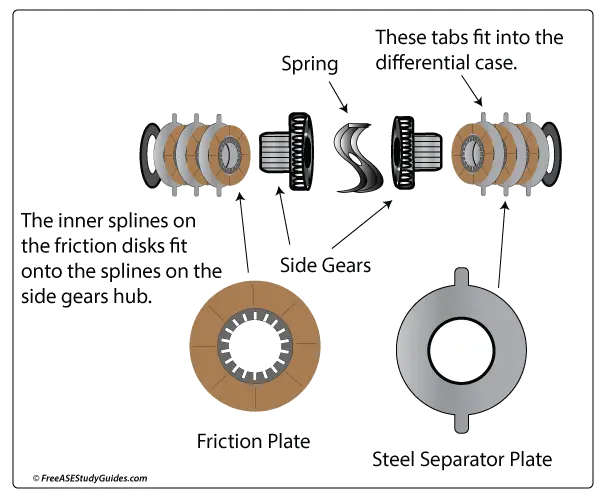Limited Slip Differentials
When a vehicle turns, the outside wheel spins faster than the inside wheel. This is because the outside path of a turn has a greater distance to travel than the inside path. A differential allows one wheel to spin faster than the other to compensate.
Open differentials power the wheel with the least resistance. This causes a tire that has broken loose and started to spin to spin even faster. This leaves the other tire with little or no torque. A limited-slip differential provides a limited connection between the two axles, providing torque to both wheels, even when one has begun to slip or break loose.

Some are not serviceable. Most contain a series of friction discs and steel plates held under constant but limited spring pressure. Some contain a viscous clutch with a thick sticky fluid that gets thicker as it heats up. This unit is typically replaced when the fluid wears.
Special Fluid: These units require a special type of fluid typically recommended by the manufacturer. Adding the wrong fluid can result in slippage and chatter around corners.